Nurse Johanna Kleinod (1885-1981)
Pioneer in healthcare
‘That’s not a problem, I’ve got a motorbike,’ was Johanna Kleinod’s response when she was asked whether she had transport and if she was good at riding a bicycle. In 1920 she started work at Philips as a nurse, charged with checking up on employees at home when they had reported in sick. She didn’t stay in this job for long, however, because it very quickly became clear that Sister Kleinod was very skilled at organizing and managing. She introduced a range of measures to improve the health of Philips employees, their families and the wider community of Eindhoven. We shared her inspirational story to mark International Women’s Day on March 8, 2022.
When she passed away in 1981, Philips remembered Johanna Kleinod as one of the founders of the Philips healthcare service, as a decisive, independent woman who was far ahead of her time.
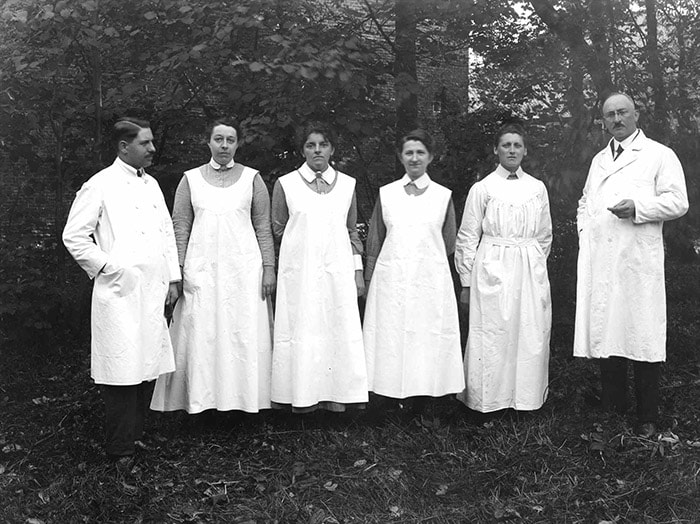
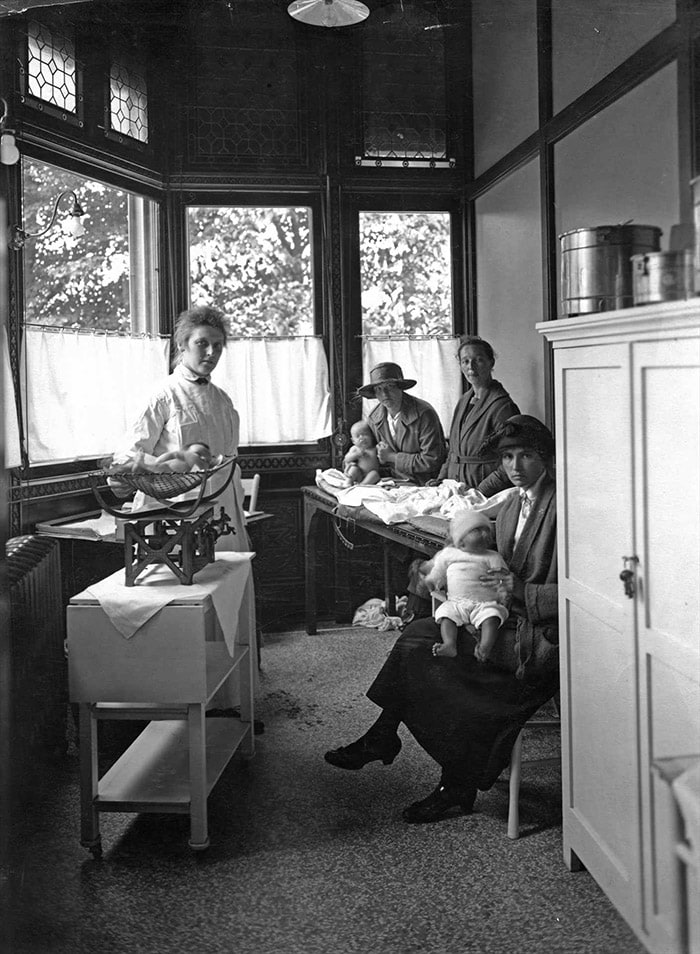
Johanna Kleinod was born on January 22, 1885, in Dirksland (on Goeree-Overflakkee island in the Netherlands) and grew up as one of six children. Her father was a coachbuilder by profession. Johanna went to Amsterdam to train as a nurse in the Julianaziekenhuis hospital. After that she became a district nurse in Watergraafsmeer, a residential area in the east of Amsterdam. It very quickly became clear that she had other talents too and in 1913 she wrote a book entitled ‘A basic handbook for mothers and nurses on how to care for mother and baby’ (‘Eenvoudige handleiding voor moeders en bakers bij de verzorging van kraamvrouw en kind’). This publication – with a foreword written by Prof. Dr. B.J. Kouwer, professor of midwifery at the University of Utrecht – fulfilled a national need for better information to help prevent complications associated with childbirth. Following this, Johanna Kleinod herself started work as senior nurse at the state training college for midwives in Rotterdam (Rijkskweekschool voor Vroedvrouwen).
Pioneer at Philips
Why did Johanna Kleinod give up her job in Rotterdam to work at Philips as a nurse checking up on sick employees at home? Anna Philips-de Jongh, the wife of Anton Philips, had a part to play in this. She approached Johanna herself to ask her to take up this new post and it seems the two women discussed all manner of plans together before Johanna started work. As it turned out – thanks to Anna Philips and Johanna Kleinod – a few months later the Philips Medical Service was expanded to include a midwifery service. In 1921 a Philips child health clinic for newborn babies was added at the Philips outpatient clinic in the Willemstraat. Johanna Kleinod was the lady in charge. The number of employees at Philips increased dramatically and within the space of a few years the midwifery service and the child health clinic were dealing with almost a quarter of all pregnancies and births in Eindhoven. At that point in time the Kruisverenigingen organizations (which fulfill this role today) had not yet started running ante-natal clinics, and Philips played a pioneering role in this field. But Johanna Kleinod did more than that. She also published tips for mothers in the ‘city news’ column in the Meierijsche Courant newspaper. And in 1933 the Chief Inspector of Public Health gave her permission to run a course for maternity nurses. ‘Well-mannered girls and women below the age of 40’ were encouraged to sign up for the course in the Willemstraat. Johanna also ran nursing courses in Eindhoven and the surrounding area. Like some kind of flying nun, she would ride from one village to another on her motorbike at excessive speed.
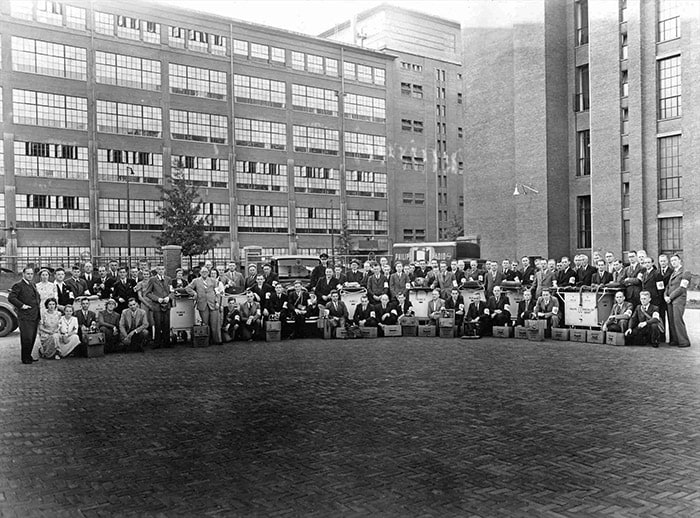
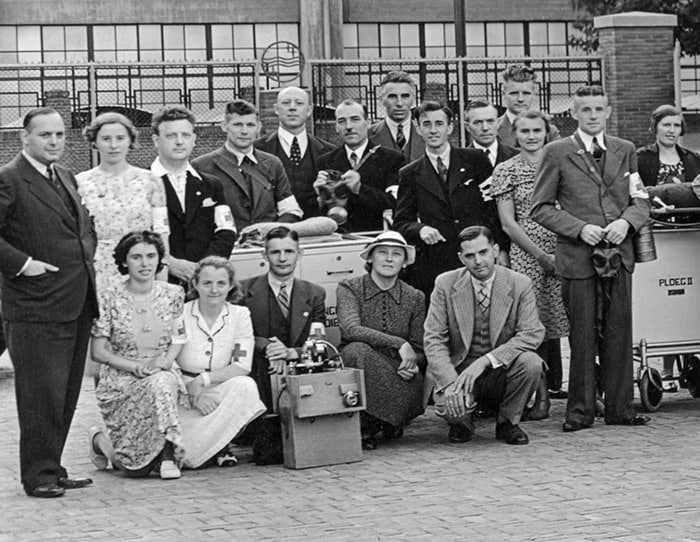
A tenacious lady
Johanna played a major role in the expansion of the First Aid service. Together with the company medical officer Anton van Anrooy, she ensured that every organizational unit had access to a team of trained first aiders. They were equipped with the necessary resources to provide first aid in the event of an emergency. She wrote about this in almost every issue of the employee newsletter. She also made people aware of the first aid facilities at specific events and encouraged employees to sign up for a first aid course.
Johanna Kleinod spent nearly twenty years at the child health clinic in charge of a team of doctors, nurses and administrative staff. In addition to that, she implemented a host of other measures – in many cases off her own bat – in order to improve the health of Philips employees. She frequently challenged factory bosses as well as the senior management about issues such as inadequate ventilation, poor hygiene and hazardous working conditions. If they ignored her advice she could be very tenacious.
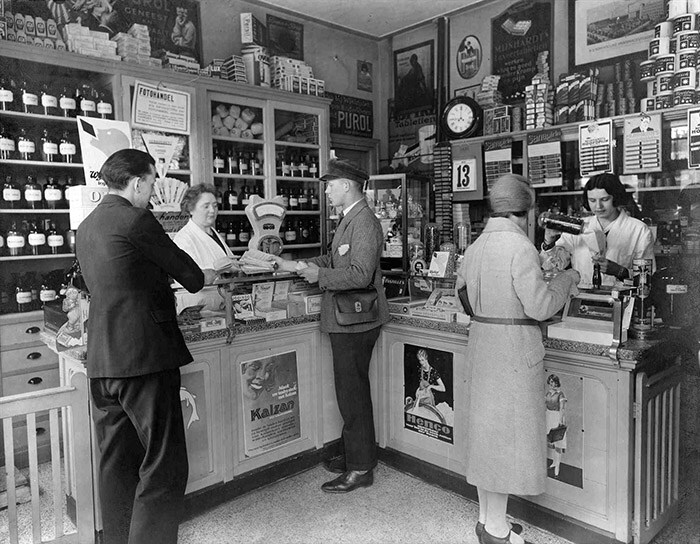
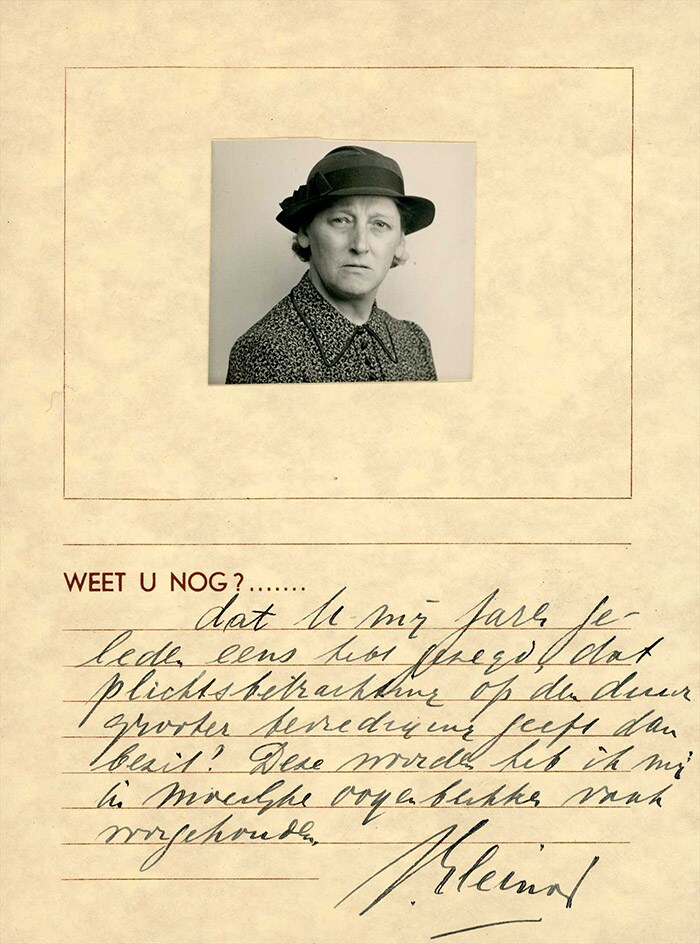
Combating tuberculosis
Even at a fairly young age Johanna Kleinod was very aware of the major social problem of tuberculosis. In 1913 she published an inspired article in the Maas- en Scheldebode newspaper about the role of district nursing in combating tuberculosis (TB). In her opinion TB was primarily a social disease. She maintained that poor living conditions, a lack of sunlight and fresh air, poor hygiene, malnutrition as well as ignorance were all factors that helped to make this disease so deadly.
In this Johanna was very much influenced by Theodor Fliedner, a German priest who since 1836 had been training nurses to become deaconesses (protestant ‘sisters’). She shared his beliefs with regard to the healing effects of rest, cleanliness, fresh air and healthy nutrition. And she also shared the Christian ideal: ‘the aim is to serve, to live for another’.
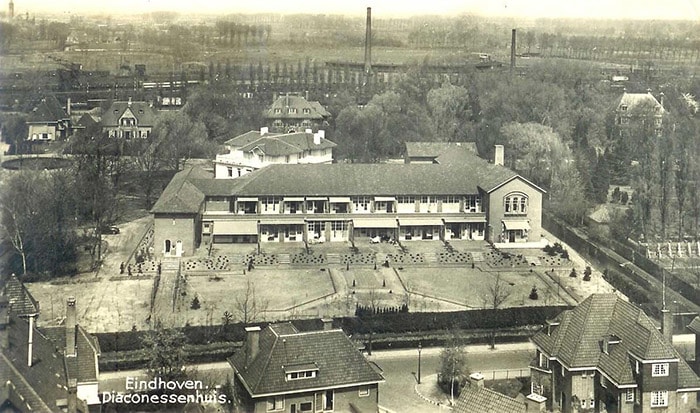
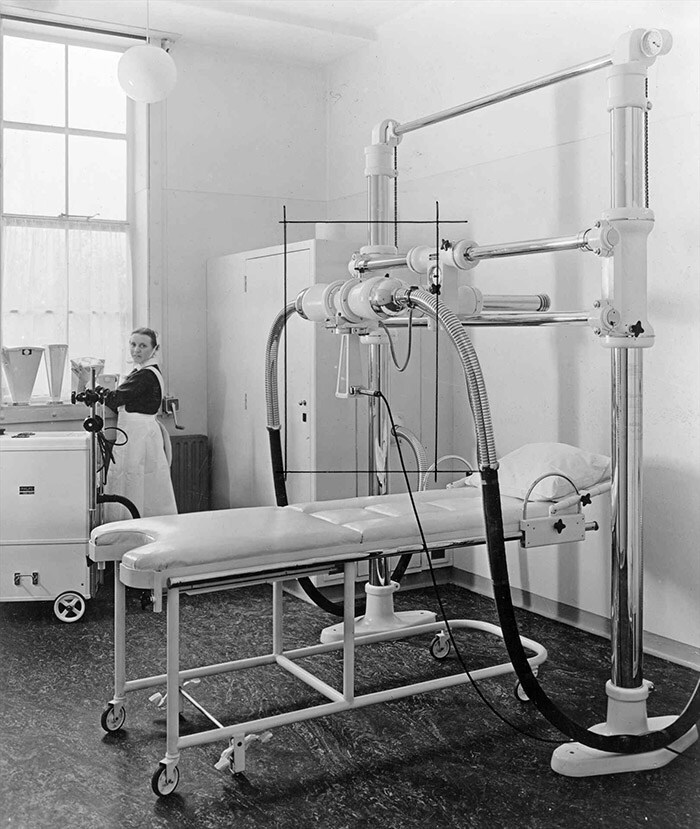
Focus on health and hygiene at ETOS
Alongside her job, Johanna Kleinod also acted as a consultant to the Philips Consumers’ Cooperative Society (Philips Coöperatieve Verbruiksvereeniging), which in 1931 became known as the ETOS (in Dutch the letters stood for ‘Unity, Dedication, Consultation and Collaboration’). In this role she raised awareness of the importance of a healthy diet and she introduced into the grocery stores a wide range of products that helped to promote hygiene and good health. She also taught the store assistants about how the health products should be used. When the ETOS stores were sold to Albert Heijn in 1973 they all became drug stores. Johanna Kleinod’s pioneering work is still remembered by ETOS to this day (https://www.etos.nl/about-us/).
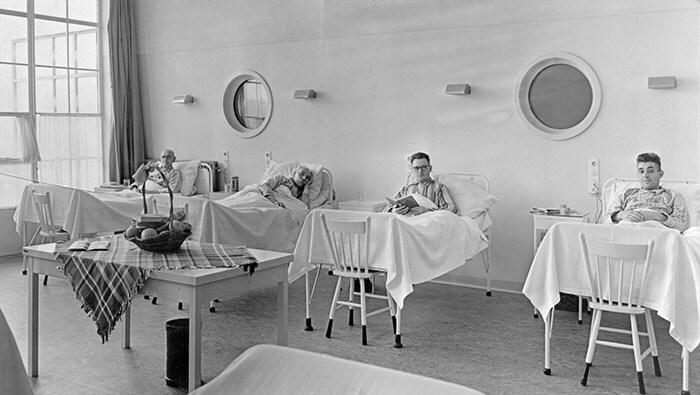
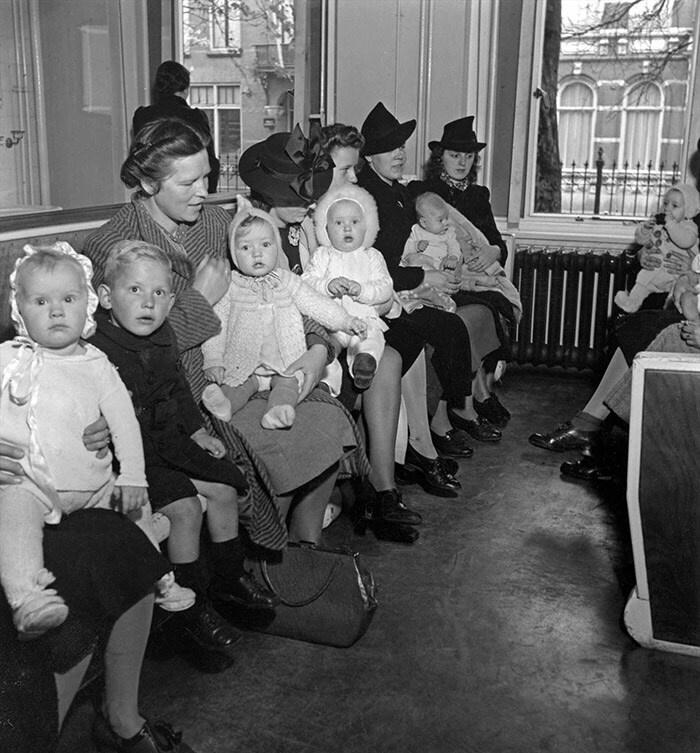
First female president of the Diaconessenhuis (now the Máxima Medical Center)
It soon became clear that the hospital fulfilled a real need, in particular for the families of the thousands of employees who had been recruited from all over the country to come and work at Philips in Eindhoven. In 1935 – again with financial support from Anton Philips – the ‘Vereniging voor Diaconessenarbeid in Eindhoven en Omstreken’ (‘Association for Deaconess work in Eindhoven and the Surrounding Area’) acquired the stately home known as ‘Elsheim’, which was also located on the Parklaan. It had a large garden which provided the space needed to build a new hospital from scratch. When this hospital opened on January 13, 1940, Johanna Kleinod was appointed a Knight in the Order of Orange-Nassau. The hospital had the capacity to admit ninety patients and was equipped with state-of-the-art facilities, including an X-ray department installed by Philips and a special wing for the treatment of patients with tuberculosis.
Barely six months after she had first arrived in Eindhoven, Johanna Kleinod set up a branch of the Dutch Christian Women’s Institute (Nederlandse Christen Vrouwenbond) for Eindhoven and the surrounding area. It wasn’t long before she put the need for a protestant-Christian hospital in Eindhoven on the agenda. And by March 1922 the ‘Christian Association for nursing the Sick and Tuberculosis Patients’ had been set up, with Johanna as its president.
The aim of setting up a protestant hospital was not easy to achieve. In the end the hospital was made possible thanks to financial support from Anton Philips, and in 1933 a modest hospital opened its doors at Parklaan 81. In order to avoid any problems with the catholic city council, Johanna Kleinod decided, very cleverly, to initially name the hospital ‘Julianaziekenhuis’, although by the time the hospital opened its doors its name had already been changed to ‘Diaconessenhuis’. Johanna Kleinod herself became president of the board. Her colleague, Mientje Goedegebuure, who was head of social work at Philips, became the manageress. Due to a shortage of nurses, in the early years Johanna regularly helped out as an anesthesia nurse and/or surgical nurse.
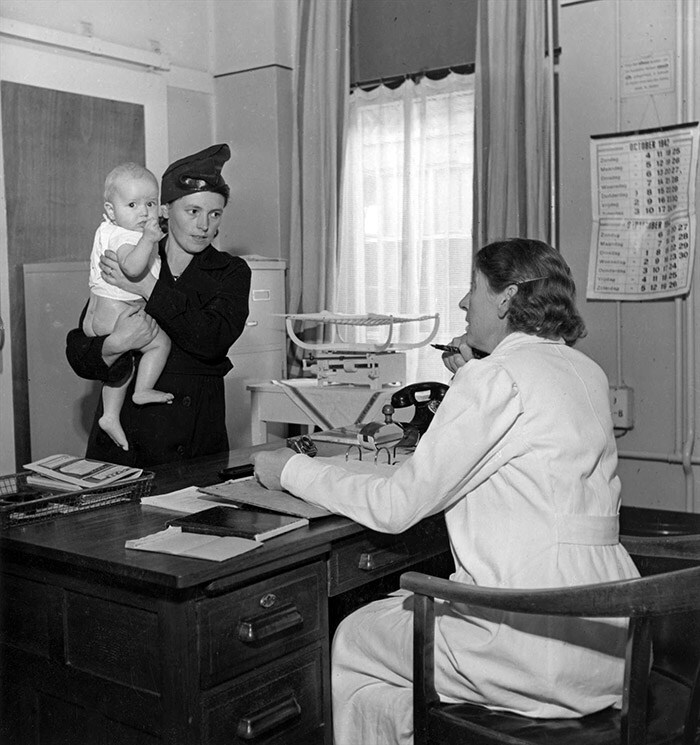
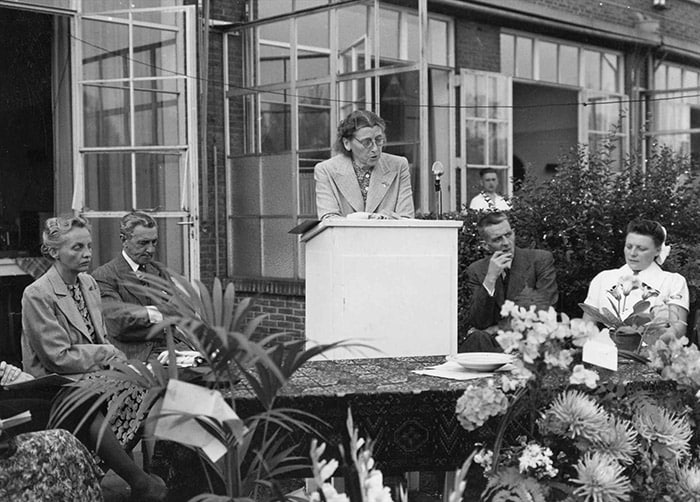
A good person with a tender heart
Johanna Kleinod passed away on October 2, 1981, at the age of 96. It was her express wish that her death should not be announced until after her funeral. The local Eindhovens Dagblad newspaper described her as a dynamic and practical woman who was far ahead of her time and had done a lot to improve healthcare in Eindhoven. The director of the Diaconessenhuis said that Eindhoven had lost a woman of great stature who was able, like no other, to inspire people to achieve a given aim. Philips remembered Johanna Kleinod as one of the important founders of the company’s healthcare service, but above all as a ‘good person with a tender heart’. (c) Koninklijke Philips N.V. (Philips Company Archives).
After she retired from Philips in 1945, Johanna Kleinod continued to be involved in the running of a number of healthcare establishments. In 1962, at the age of 77, she turned the first sod for the construction of the new Diaconessenhuis hospital, which is today’s Máxima Medical Center, in Eindhoven. She took the flowers she was given to mark this occasion and laid them on the grave of her good friend Mientje Goedegebuure, who passed away in 1961 and had been Johanna’s housemate in the Petrus Dondersstraat for more than twenty years. A request from the board of the Diaconessenhuis to the town council asking for the street on which the hospital stood to be named after Johanna Kleinod was turned down. Streets were not named after people who were still alive. The board suggested ‘Ds. Theodor Fliednerstraat’ as an alternative. This suggestion was accepted and it will undoubtedly have had the approval of Johanna Kleinod.

